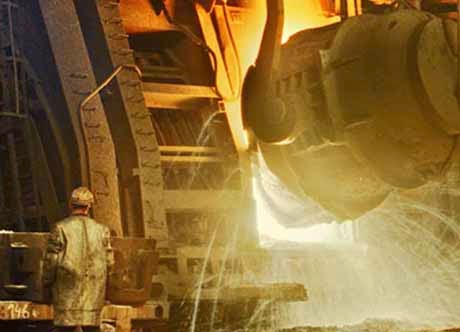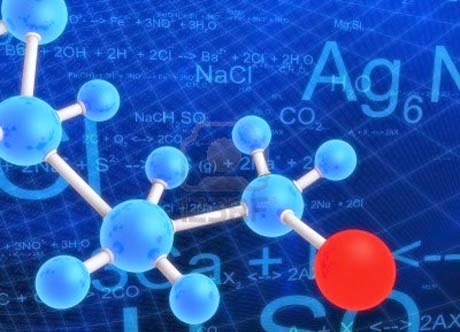By Frank Rovella
We all know that this is a very talked-about subject, and
for good reason; if you’re like me, you’ve read enough articles on the subject
to make your hair hurt. Most of what
I’ve seen seems to focus on the problem through a statistics-based perspective,
or a case study showing what an individual manufacturer is doing to develop new
talent, with the proclamation that we all have to do our part, and many larger
firms are doing just that. Training programs and apprenticeships have proven to
be very successful, that is, if you have the budget or the staff for it. As a quality guy, my first instinct is to
look for the root cause. I had a pretty good idea, however, after some research
I found, that the problem is far more complex and goes much deeper into our
society as a whole.
Anyone in manufacturing or heavy industry knows the
statistics without having to be told. We have an aging workforce with little or
no new talent entering the stream. The important thing to remember is that this
didn’t happen overnight, and the logic that we associate with supply and demand
doesn’t apply here. Even with the stories of welders working Marcellus Shale
making over $100,000 a year, manufacturers across North America turning down
work because they don’t have enough skilled labor, or the fact that 48% of
college grads are working jobs that don’t require a degree--the reality still
hasn’t been sinking in to the places where it matters most, high schools. If
you visit your local high school and tour their shop classes you’ll quickly
find the problem; there are no shop classes.
I grew up in a heavy industrial and manufacturing region
that runs from Bridgeport, CT to Springfield, Mass. In 9th grade, I was turning parts on a lathe,
working with a small aluminum foundry, and learning the basics of machining and
manufacturing. In high school, we had an even more extensive machine shop, as
well as an electrical shop, fully equipped print shop, an auto shop with four
lifts and a front end machine, and a hydraulics work station. There was a
waiting list to get into drafting class, and I was earning credit for working
in a shop after school. Manufacturers were happy to take kids in right out of
high school, and they are again today, but a number of things happened between
then and now that led to the lack of skilled labor we see today. The end of the
Cold War and a series of economic downturns helped to choke American
manufacturing in the 80s and 90s. Add to
that the exponential expansion of computing that has spawned the growth of the
non-mechanical generations. We’ve all heard someone say it, “kids don’t go
outside to play anymore.” This has led to the growing disinterest in everything
mechanical. As Americans, we are born opportunists; when there is a need, we
will take the reins and make a living doing it. It’s been that way throughout
our history, so why is this different?
The economic and societal changes of the past three decades
have changed the way most Americans think about work and careers. Since the
late 1970s, these fundamental changes have been reflected in school curriculum,
which has slowly been pushing the shop out of the picture.
It’s easy to blame the education system for looking down its
nose at manufacturing and skilled labor, but parents are just as much to blame,
and with good reason. Up until recently, manufacturing jobs were not the
greatest place to end up if you didn’t go to college; low pay, bad conditions,
and poor treatment of employees was common because of a large workforce. Every
parent wants their kid to go to college, but as many teachers have told me,
some kids just aren’t college material, and pushing for that goal and that goal
only is selling them a false bill of goods.
To put in perspective how serious of a problem this is, I’m
going have to relent and use some stats. Of the approximately 4 million high
school seniors enrolled in 2014, 34% (1.36 million) will not go to college. Add
to that a 20% (800,000) drop-out rate, and we are talking about the potential
for a very large work force. So why are we even having this conversation? Old
habits die hard, and rebuilding the shop class takes more than money; it takes
a fundamental change in the way Americans think about manufacturing. And as with
everything else that centers on our future generations, it starts at home.
Teaching a 20-something how be mechanically-inclined is a long shot. Put a
14-year-old in a machine shop, or teach them to weld, and you have the
beginning of the answer.
Just to be clear, this is not a denunciation of technology;
to the contrary, technology is and always will be inexorably connected to
manufacturing and heavy industry. Instead, this is a wake-up call to parents
across America. In this market, the blue collar can easily compete with the
white, with careers that can be just as rewarding, if not more so, and don’t
require the burden of debt that a four-year degree does.
 Now it can
be said that an ISO 9001:2008 certification is only as good as the auditor, but
even with the laxest inspector, having that plaque in the lobby is a source of
pride for many manufacturers.
Now it can
be said that an ISO 9001:2008 certification is only as good as the auditor, but
even with the laxest inspector, having that plaque in the lobby is a source of
pride for many manufacturers. 



























